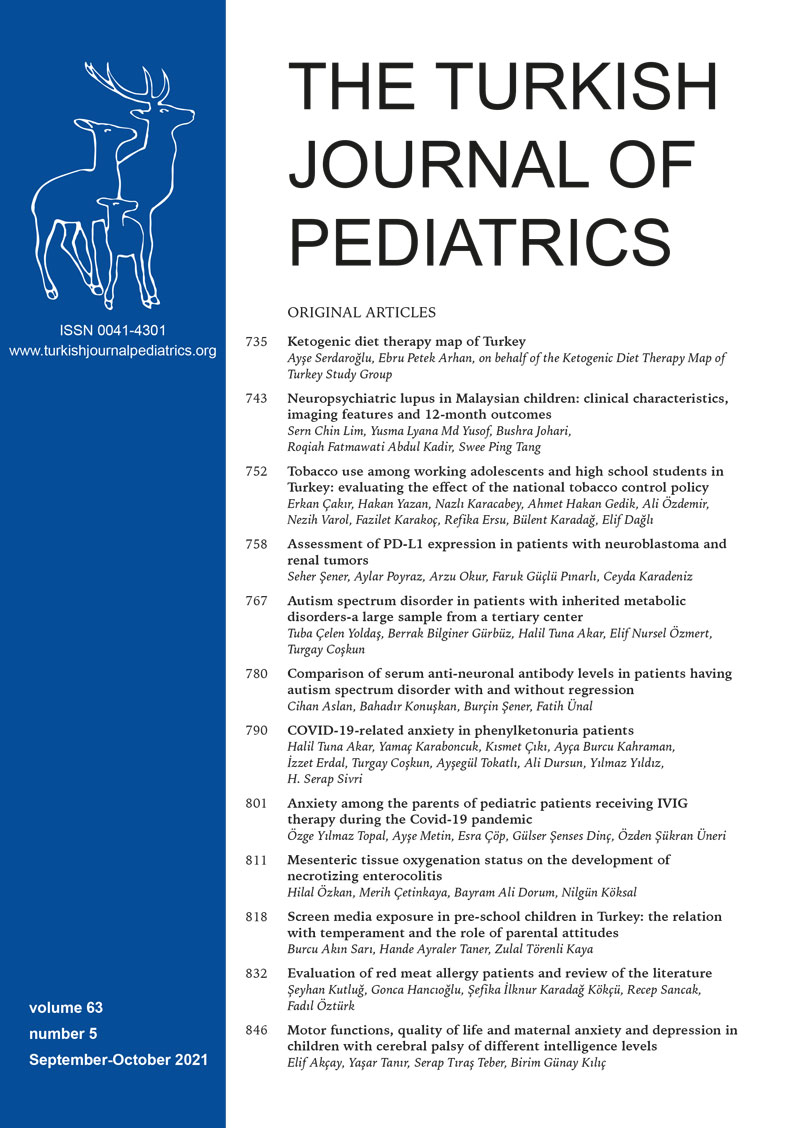Abstract
Background. Necrotizing enterocolitis (NEC) is an important cause of morbidity and mortality in preterm infants. There is limited data about the role of mesenteric oxygenation status during the first enteral feeding. Therefore, the aim of this study was to determine the mesenteric tissue oxygen saturation values before, during and after the first enteral feeding and to evaluate the effect of these values on the development of NEC in preterm infants.
Methods. A total of 105 preterm babies with ≤ 32 gestational weeks were included in this prospective study. The continuous monitoring of the mesenteric tissue oxygenation status was performed before, during and 3 hours after the first feeding by near-infrared spectroscopy (NIRS).
Results. The mean gestational week and birth weight of the study group were 28.8±2.1 weeks, and 1215±387 g, respectively. The first enteral feeding was started at 2.4±1.4 days with breast milk in 85% of infants. A total of 12 infants (11.4%) developed NEC (66% stage II, 34% stage III). The mean mesenteric tissue oxygen saturation levels of the infants that developed NEC were significantly lower both before and one hour after feeding (56.1±3.4 vs. 34±8.8, and 47.4±3.3 vs 37.8±10.9, respectively) compared with infants that did not develop NEC.
Conclusions. Lower mesenteric tissue oxygenation values measured before, and one hour after enteral feeding was associated with NEC development. We suggest that lower mesenteric tissue oxygenation during continuous monitoring of first enteral feeding may be used to predict NEC development during follow-up.
Keywords: NICU, enteral feeding, near-infrared spectroscopy, necrotizing enterocolitis, premature
Copyright and license
Copyright © 2021 The Author(s). This is an open access article distributed under the Creative Commons Attribution License (CC BY), which permits unrestricted use, distribution, and reproduction in any medium or format, provided the original work is properly cited.














